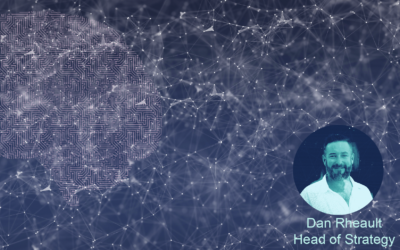Enterprises are not just accumulating a collection of security tools; they are curating a sophisticated platform designed to safeguard their digital assets. The strategic process of selecting these tools is critical, yet it’s just the beginning. The real challenge lies not in choosing the best tools, but in seamlessly integrating them into a cohesive technology stack. This integration is pivotal because, in the realm of cybersecurity, taking a simple approach often deceptively results in complexity, and the complexity in review and implementation of tools, paradoxically, can simplify security efforts. Yet across both lines of thinking, we know complexity is the adversary of security. Our choice lies in where we accept complexity – the review or the outcome.
The Paradox of Choice and Integration
Enterprises, in their quest for robust security, often encounter the paradox where simplification within specific IT and security silos leads to overarching complexity for the security teams. This complexity arises as each team selects tools that best meet their immediate needs, not necessarily considering the broader implications on the enterprise’s security posture. For instance, tools selected by application, security, and engineering teams serve different purposes and assess risk through their unique lenses. While these tools might optimize processes within each silo, they complicate the security team’s task of maintaining a holistic view of the organization’s security. Understanding the cascading impact of risk from a UI vulnerability of a web application to the infrastructure and other applications sharing a dependency on the data server is a complex task, requiring convergence of application vulnerability analysis, network connection mapping, and exploitation correlation.
Breaking Down Silos for a Unified Security Framework
The essence of building an effective security platform lies in the ability to break down the barriers between all silos, ensuring the seamless flow of information and creating a unified defense mechanism. For security to evolve beyond a collection of discrete tools into a coherent technical platform, it must centralize and converge all data sources to establish the authoritative data source. This centralization allows for the automation of actions through workflows across different tools, making security intelligence accessible to non-specialists, and ensuring accessibility to existing business intelligence tools for comprehensive insights.
Achieving this requires a nuanced approach, where data from various tools is not just aggregated but refined and enriched to facilitate connections across the platform and enhance the functionality of automated tools. The goal is to create a security ecosystem that is both robust and flexible, capable of adapting to the unique challenges and opportunities presented by the enterprise’s operational landscape. This interconnectedness is what constitutes the enterprise security platform, comprising its many vendors.
Simplifying Complexity for Enhanced Security
The journey towards an integrated security platform is fraught with challenges, primarily due to the inherent complexity of merging diverse tools into a coherent system. However, this integration is crucial for developing a security posture that is proactive, predictive, and, above all, effective. Simplification within this context means creating a platform where information is not only shared across teams but is also actionable, enabling swift and informed decision-making in the face of security threats.
Enterprises must navigate these complexities with strategic foresight, recognizing that the ultimate aim is not just to collect the best security tools, but to weave them into a fabric that protects the organization as a whole. This requires a commitment to ongoing refinement and adaptation as the technology and network change.
Moving Forward
As enterprises continue to grapple with these challenges, the conversation around platform integration and its impact on customer appeal becomes increasingly relevant. The path to simplification is through embracing the complexity of integration, acknowledging that a unified security platform is far more valuable than the sum of its parts, even though each part brings another layer of data management and enrichment. In doing so, enterprises can transform their security posture from a fragmented collection of tools into a strategic, integrated defense and response mechanism capable of confronting the cybersecurity challenges of the digital age.
The journey toward an integrated technology stack in cybersecurity is complex but crucial. It demands a delicate balance between leveraging specialized tools and fostering an environment where these tools contribute to a unified, strategic platform. By embracing this challenge, enterprises can enhance their security posture, ensuring they are better equipped to protect their digital landscapes in an increasingly hostile cyber environment.
Can you buy a platform? Maybe. At least that’ll be part of the marketing message. But you can certainly build it with what you already own. That may be more complex, but the outcome is elegant simplicity that reduces costs, enables effective risk reduction, and empowers the business.
We know this because we don’t provide a platform. Each enterprise has its own tooling resulting in a unique portfolio of tools, each with its own perspective, and distinct interoperability with other tools. Making sense of each one requires data retrieval and ingestion, deduplication, and analysis which is often a prolonged and partially automated process. So we help simplify it.


